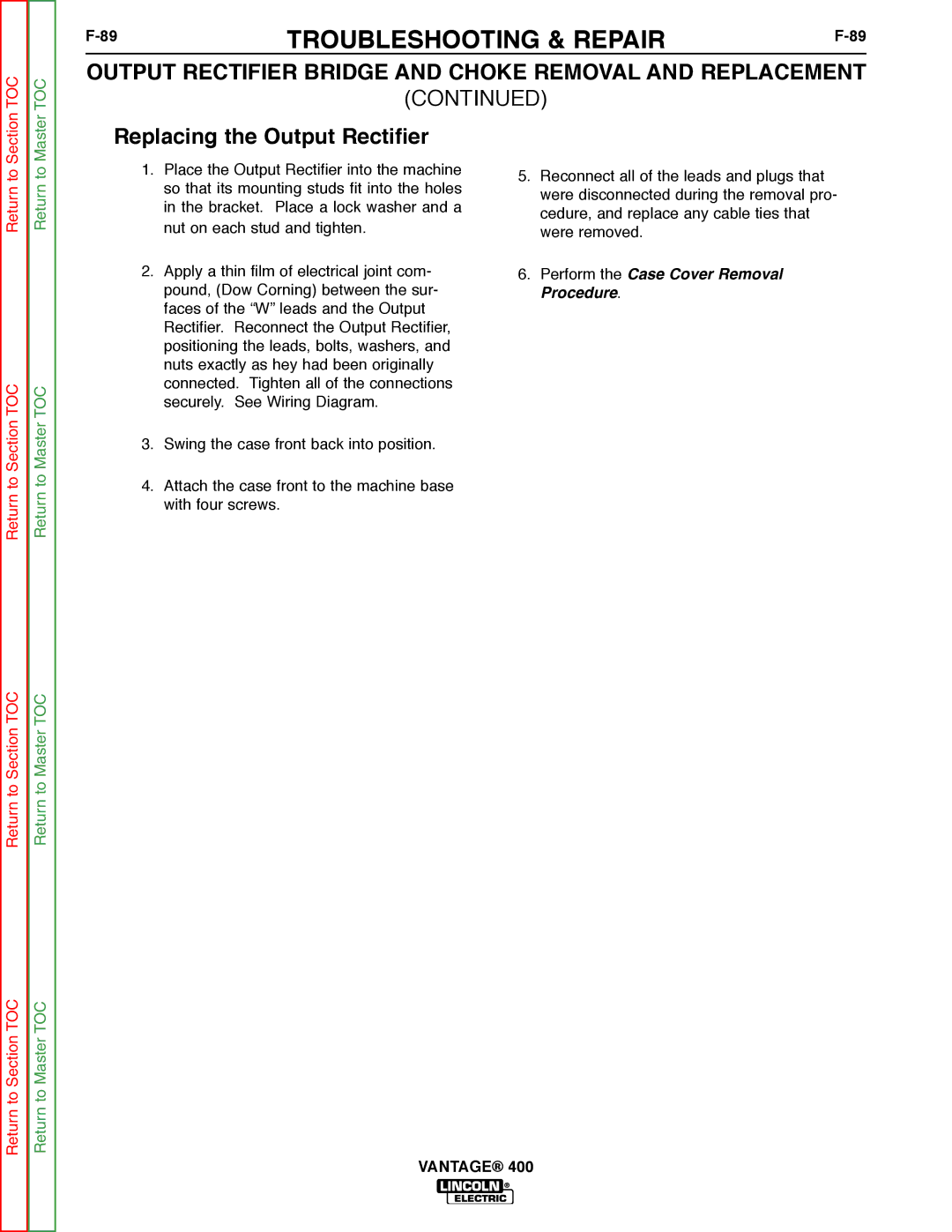400 specifications
The Lincoln Electric 400 is a state-of-the-art multi-process welding machine designed to meet the demands of today’s industrial welding applications. Renowned for its reliability and versatility, this welder is a preferred choice among professionals in fabrication, construction, and maintenance industries.One of the main features of the Lincoln Electric 400 is its multi-process capability. It seamlessly integrates MIG, TIG, and stick welding processes into a single unit, allowing users to switch between methods depending on the job at hand. This flexibility makes it incredibly suitable for a wide range of materials, including steel, stainless steel, and aluminum.
The welding machine boasts a robust power output, with a maximum range of 400 amps. This impressive capacity enables it to handle thick materials effectively, making it ideal for heavy-duty tasks. The machine operates on both single-phase and three-phase power, giving users the advantage of versatility depending on the power source available at the job site.
Another significant characteristic of the Lincoln Electric 400 is its advanced digital display and control interface. This user-friendly panel allows for easy adjustments to voltage and wire feed speed, ensuring precision and high-quality welds. Additionally, the machine includes built-in features to improve the consistency of welding, such as the Smart MIG technology which optimizes the welding parameters automatically based on the wire diameter and material thickness.
In terms of durability, the Lincoln Electric 400 is designed for rugged environments. Its heavy-duty construction, including a robust metal casing and protective features, ensures it can withstand the rigors of daily use in harsh conditions. Furthermore, the welder is often praised for its efficient cooling system, which prolongs the machine's lifespan and maintains optimal performance even during extended usage.
Portability is another key aspect of this welding machine. Weighing under 200 pounds, it is designed with mobility in mind. The integrated wheels allow for easy transportation between job sites, making it a practical choice for mobile welders and contractors.
In conclusion, the Lincoln Electric 400 stands out in the welding equipment market due to its multi-process capabilities, impressive power output, user-friendly interface, durability, and portability. It is engineered to exceed the expectations of professional welders, providing them with the tools needed for high-quality results across a variety of applications.

